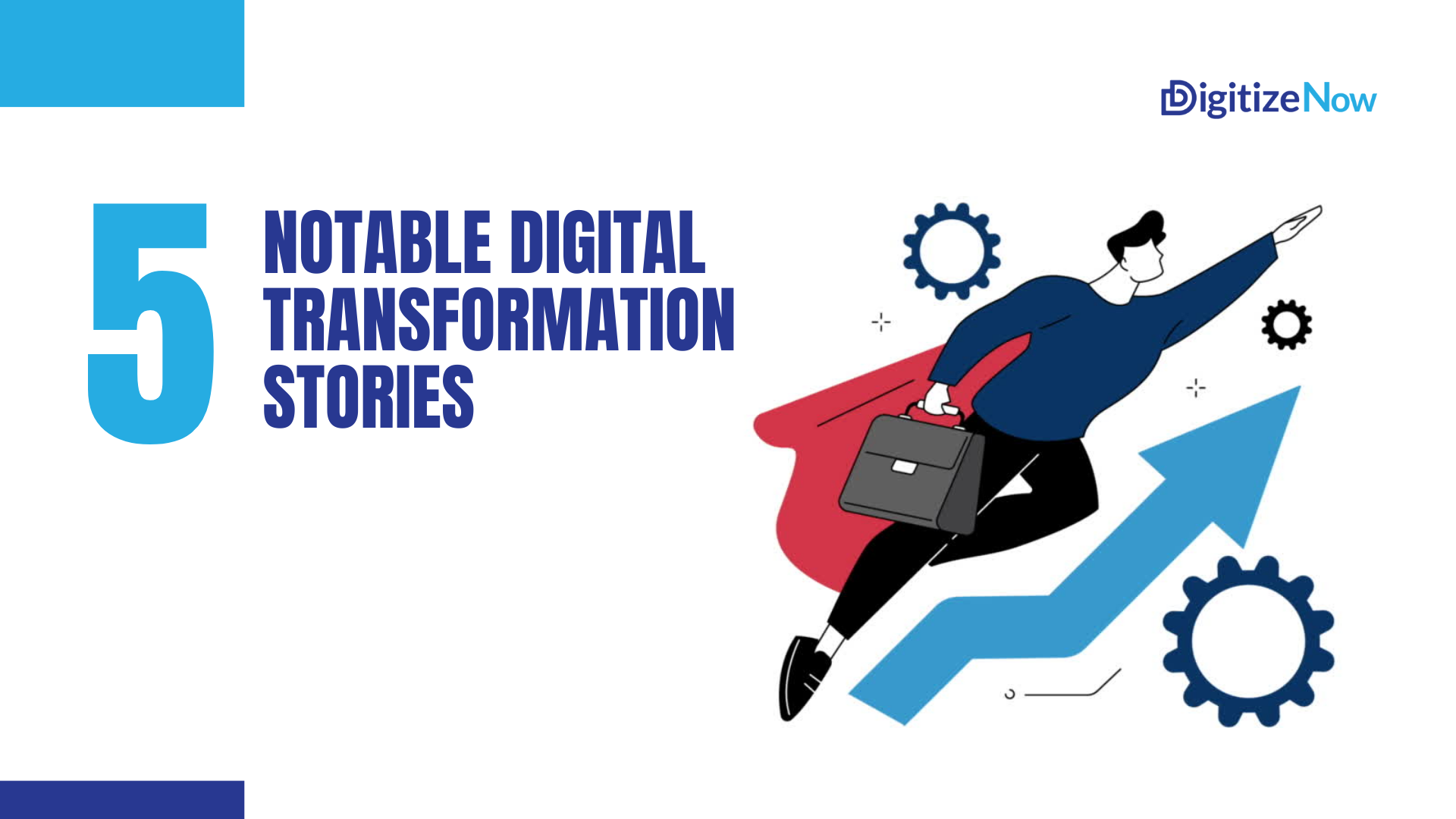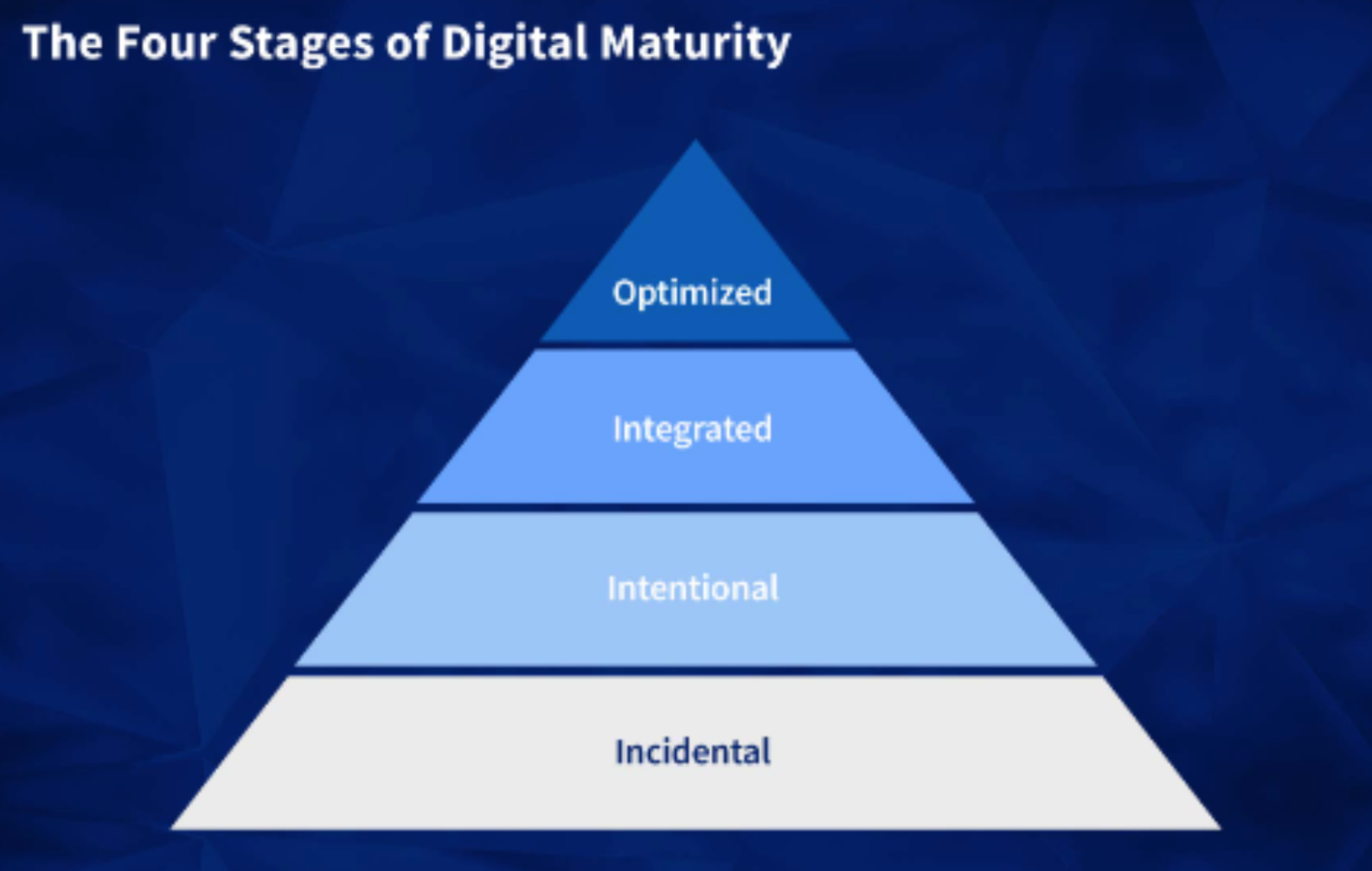In the dynamic landscape of the digital age, businesses, both multinational corporations and fast-moving startups, are navigating uncharted territories with the transformative power of technology.
In this era of profound technological change, understanding the basics of digital transformation is not just an option—it’s a necessity. Many organizations have adopted various strategies for digital innovations to stay relevant and move toward continuous improvement.
This blog will serve as your guide to the digital marvels shaping our world. We’ll explore real-world examples of digital transformation from tech and big companies that have seamlessly woven digital transformation into their fabric.
So, what exactly is digital transformation, and why does it matter in today’s digital age?
What is Digital Transformation?
Digital transformation is not just a buzzword; it’s a fundamental shift in how businesses operate. It’s about leveraging the power of technology to streamline processes, enhance efficiency, and ultimately deliver a superior experience to both users and stakeholders.
It is also essential to understand that for companies opting into the world of digital transformation, their user base is already aware of this transformation as they use digital technology. It is something that is part of their everyday lives.
In simpler terms, it’s not only about adopting digital tools but also strategically using them so that they benefit a whole organization. Using the digital transformation, organizations can bring positive and impactful change to its entire business model. It also helps them to stay competitive, relevant, and agile across all facets of an organization.
Why it Matters in Today's Digital Age
In today’s fast-paced digital age, the importance of digital transformation cannot be overstated. The key unlocks a world of opportunities for businesses—the chance of continuous improvement, allowing them to stay relevant, competitive, and resilient in the face of ever-evolving challenges.
This transformation matters as it leads to an improved customer experience, more efficient and productive internal processes, new services and products, and better growth strategies. From improving operational efficiency to staying connected with customers innovatively, digital transformation is the pillar of success in the digital age.
As we navigate through this quick overview, we’ll unravel the essential elements of digital transformation, drawing inspiration from industry leaders and companies stepping foot in this digital age.
Embracing Progress in the Digital Age
Embracing change is not just optional; it’s a fundamental necessity for businesses seeking relevance and sustainability. Standing still in this era of rapid technological advancement is equivalent to falling behind.
To remain on the cutting edge, businesses must maintain effective change management as technology rapidly reshapes industries.
Embracing progress is not a one-time event but an ongoing commitment to staying relevant in a dynamic and competitive environment. It requires a mindset that values agility, flexibility, and a readiness to evolve with emerging trends.
Whether in operations, customer interactions, or overall strategy, businesses that seek continuous improvement, position themselves to not only navigate the challenges of the digital age but to capitalize on its myriad opportunities.
The Need for Continuous Improvement

Staying ahead and relevant in the digital landscape requires constant improvement and innovation. This approach acknowledges that the world is constantly changing, and to keep up, businesses must evolve, too.
It is not just for big companies with vast resources that seek improvement; it’s a philosophy that businesses of all sizes can embrace. It’s about fostering a culture that encourages everyone to contribute ideas for improvement and to always be on the lookout for ways to do things a little bit better. Ultimately, in the digital age, businesses prioritizing continuous improvement are better positioned to thrive and succeed in the long run.
Examples of Digital Transformation
Let’s explore 5 mind-blowing examples of digital transformation in leading companies adopting digital change and how they have revolutionized their business and impacted the digital age.
Starbucks: Brewing Digital Transformation Success
Starbucks, the renowned coffeehouse chain, is navigating a digital transformation journey to enhance customer experiences and operational efficiency.
By embracing mobile ordering, loyalty programs, and digital payments, Starbucks has fastened how customers interact with their brand. Technology integration streamlines the ordering process and enables personalized marketing initiatives, fostering stronger connections with customers.
By bringing digital transformation to life, they have enhanced customer engagement, loyalty, and overall satisfaction, setting a benchmark for others in the industry.
IKEA: Furnishing a Digital Future
As a global leader in furniture retail, the Swedish company IKEA is actively engaged in a digital transformation journey to redefine the customer shopping experience.
Leveraging augmented reality (AR) and virtual reality (VR) technologies, IKEA allows customers to visualize furniture in their homes before purchasing. This immersive approach not only simplifies but also helps make informed and improved decision-making and aligns with IKEA’s commitment to innovation and customer focus.
By enabling customers to interact with products in a virtual space, IKEA gives real life experiences to its online shoppers, providing a glimpse into the future of furniture shopping.
Disney: Enchanting Audiences Digitally
Disney is actively pursuing digital transformation initiatives to stay relevant in the ever-evolving media landscape. Through the launch of Disney+, the company’s streaming platform, Disney has diversified its content delivery channels, embracing the shift towards digital streaming. This strategic move taps into changing consumer preferences and positions Disney as a frontrunner in digital entertainment.
By adapting to new content consumption patterns, Disney ensures its continued relevance and audience engagement in the digital age.

Adani Green: Powering Sustainability Digitally
Adani Green, a prominent player in the renewable energy sector in India, is actively integrating digital technologies into its operations to enhance sustainability and efficiency.
Through the implementation of data analytics and IoT devices, Adani Green optimizes energy production, maintenance, and resource utilization. This digital approach aligns with environmental goals and positions the company as a leader in sustainable energy practices.
Adani Green’s digital transformation journey highlights technology’s pivotal role in advancing sustainability efforts.
Lego: Building a Digital Play Experience
Lego, the iconic toy manufacturer, is embracing digital transformation to complement its traditional brick-and-mortar presence.
Through interactive mobile apps, online gaming platforms, and digital content creation tools, Lego enhances the play experience for its users. This digital integration expands the brand’s reach and ensures that Lego remains a timeless and engaging choice for children in the digital era.
Lego extends its appeal to tech-savvy generations, blending the charm of physical toys with the excitement of digital interactivity.
These examples of digital transformation offer diverse transformation strategies, spanning industries from coffee to renewable energy. By showcasing the unique approaches of Starbucks, IKEA, Disney, Adani Green, and Lego, our audience gains insights into how companies in various sectors adapt to the digital age.
These examples provide valuable lessons and inspiration for businesses seeking to embark on their digital transformation journeys. From enhancing customer experiences to embracing sustainability, these companies exemplify the transformative power of digital technologies in different contexts.



